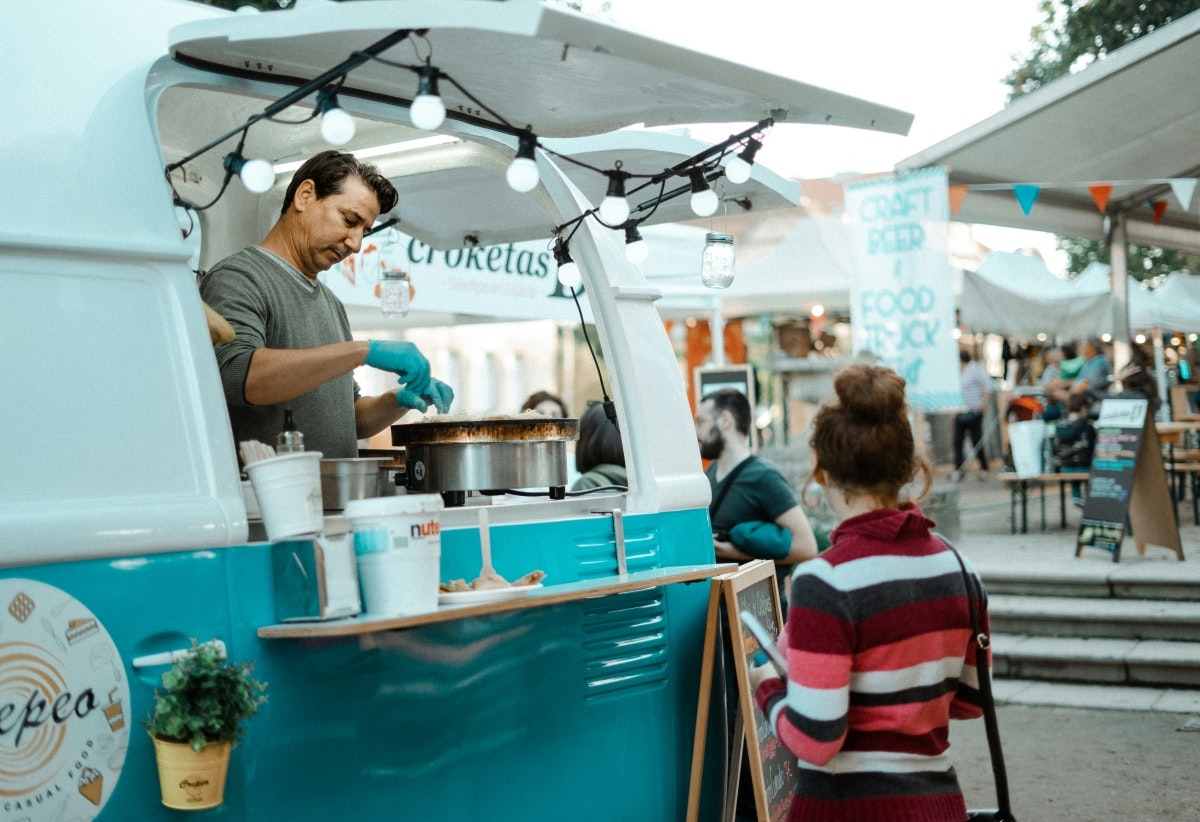"Oh, good luck with that," "That's not development, but clicking things together," "Oh, then you can pick the colors," I heard from colleague UX designers and developers when I mentioned that my next assignment would be with low-code. Were these prejudices, negative experiences, snobbery, or did they feel threatened by the ease and speed of low-code? My experiences with low-code have shown me its strengths. Below are my key takeaways, comparing it to a food truck; you might not cook a Michelin-star meal, but with a bit of love and sharp choices, you can make a big difference for your users with limited resources.

Low code & food trucks: 7 tips for the best experience
Low-code is a method of software development that requires almost no manual code writing. With standardized building blocks, drag-and-drop and flowcharts, you can quickly and easily build applications without extensive programming knowledge.
A food truck approach
Taste often: benefits of fast iterations and feedback in low-code
- Choose your event: Low-code is very suitable for internal business applications because you can quickly and robustly automate business processes. It's also ideal for developing a prototype or validating an MVP because you can design, build, test, and learn quickly and iteratively.
- Assemble your crew: Like in a food truck, a large team isn't necessary and might even be inconvenient when you want to develop and improve an application quickly. Start with a generalist UX designer with knowledge of service design and user research, who is pragmatic and can collaborate well with a low-code developer who can also test and enjoys thinking about how to work within low-code standards.
- Mise en place: Just like in the kitchen, good preparation is essential if you want to work quickly. Make sure you are familiar with the standard building blocks of low-code and align the styling and any branding with it.
- Know your audience: Research the main needs, pain points, and key tasks of your users so you know where and how you can make a difference. You can do this with interviews and a service blueprint or process map. This way, you can also show other stakeholders which processes and needs the application will support.
- Taste often: With low-code, you can develop and make adjustments very quickly. This means you don't need to test extensively with prototypes beforehand but can use the application itself for experiments and tests. Create a core group of users and stakeholders for regular 'tasting sessions.' With low-code, you can quickly gain insights and implement adjustments.
- Chef’s special: Use the standard building blocks in low-code as much as possible for speed and robustness. While you can deviate from the standard and experiment with styling and interaction, know that this can lead to more development work, bug fixing, maintenance, and potential issues with updates. Consider if it truly adds significant value for your users.
- Start a restaurant, stay a successful food truck, or stop: Low-code is perfect for quickly testing your concept's assumptions and finding the sweet spot between business value, user needs, and feasibility. Once you have this clear, you can decide to (partially) transition to a high-code application for a more refined experience or a native app.

So yes, with low-code, you can 'click applications together' and 'pick colors.' But more importantly, you can test and learn more quickly and frequently, discovering what your users really need and what makes them happy. :)